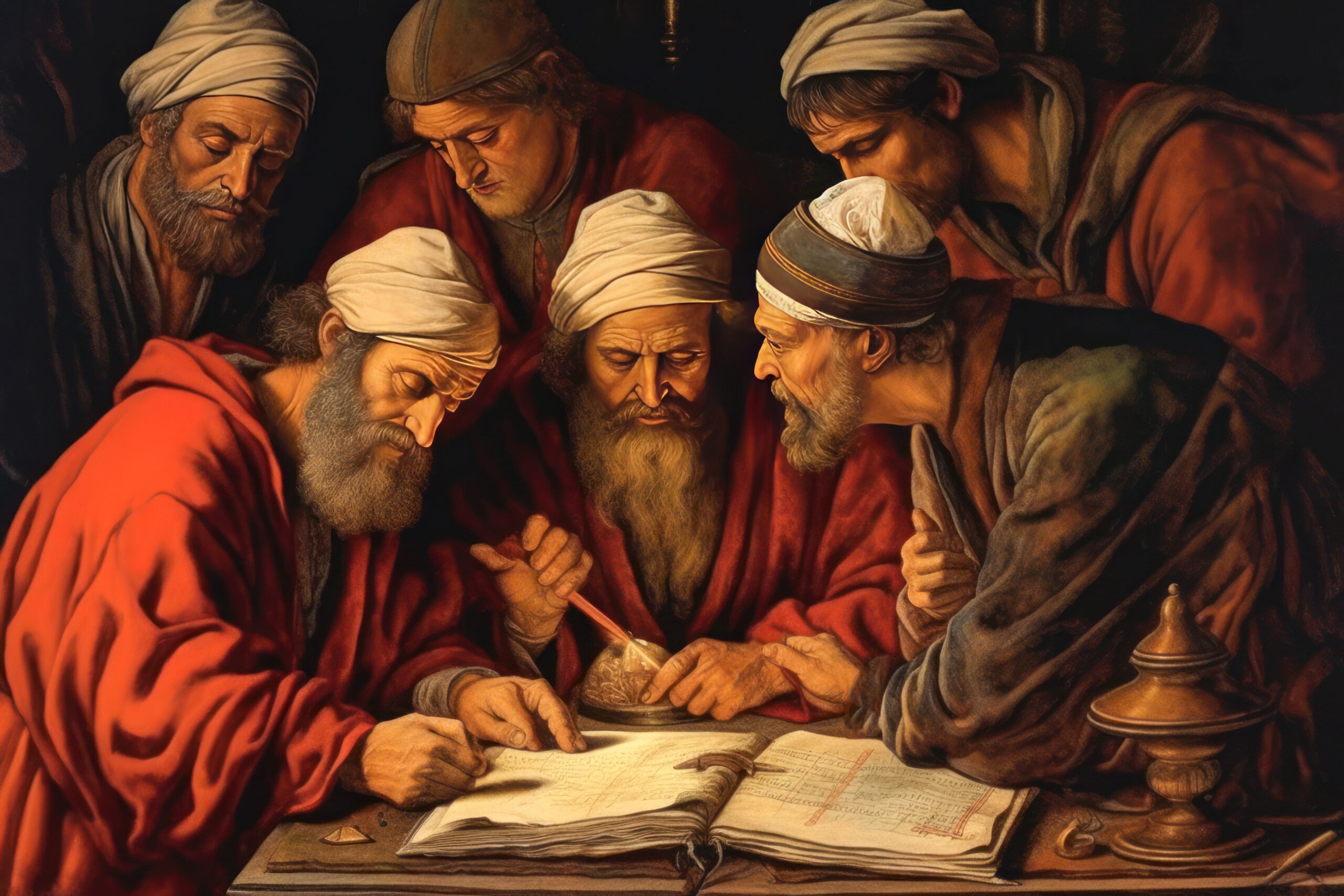Illustration of ancient Jewish Sanhedrin council, from an 1883 encyclopedia
The Sanhedrin, meaning "assembly" or "council" in Hebrew, traces its origins back to biblical times, with its heyday during the period of the Second Temple in Jerusalem. It was established as a supreme court, responsible for interpreting Jewish religious law (halakha) and resolving legal disputes among Jews.
The composition of the Sanhedrin varied over time but generally consisted of seventy-one members, including priests, scribes, and elders. Its leadership was comprised of a Nasi (president or literally "prince") and an Av Beit Din (literally "father of the court" but functionally more like a vice president), with other members representing different sects and regions within Jewish society. Together, they deliberated and ruled on matters pertaining to religious doctrine, civil law, and communal affairs.
The Sanhedrin had the authority to make significant changes to Jewish law at the time, and its rulings and methods are studied by Jews to this day.

Following the destruction of the Second Temple by the Romans in 70 CE, the Sanhedrin underwent significant changes. While efforts were made to preserve its authority and traditions, the loss of the Temple and the dispersion of the Jewish people led to a decline in its influence. While the Sanhedrin continued to exist in various forms in different locations, its reduced authority and the lack of a centralized Temple or Jewish sovereignty rendered it difficult to maintain, and it soon dissolved.
In later centuries, some attempts were made to revive the Sanhedrin, particularly during the medieval and early modern periods. However, these were usually more symbolic efforts, and many Jews believe that we cannot have a fully revived Sanhedrin until the Holy Temple in Jerusalem is rebuilt.
Today, this historic Jewish supreme court remains an inspiring element of ancient Judaism, representing the rich heritage of Jewish jurisprudence and religious leadership. It also symbolizes the hope held by many religious Jews of one day rebuilding the Temple and reestablishing biblical modes of worship and governance including the Sanhedrin itself.
Connect with Jewish history and the Land of Israel like never before with our magnificent Jerusalem gifts by Israeli artists!
















